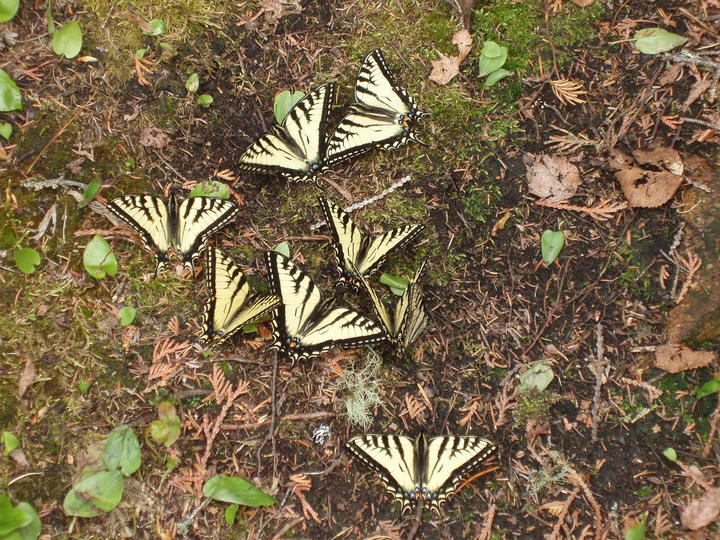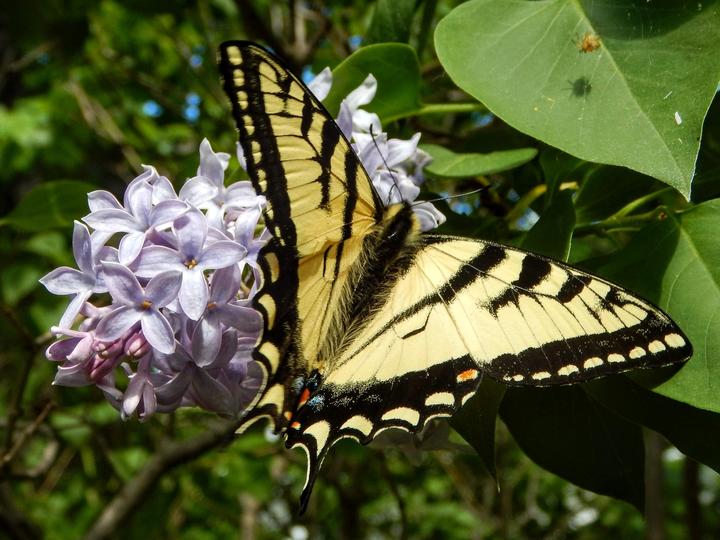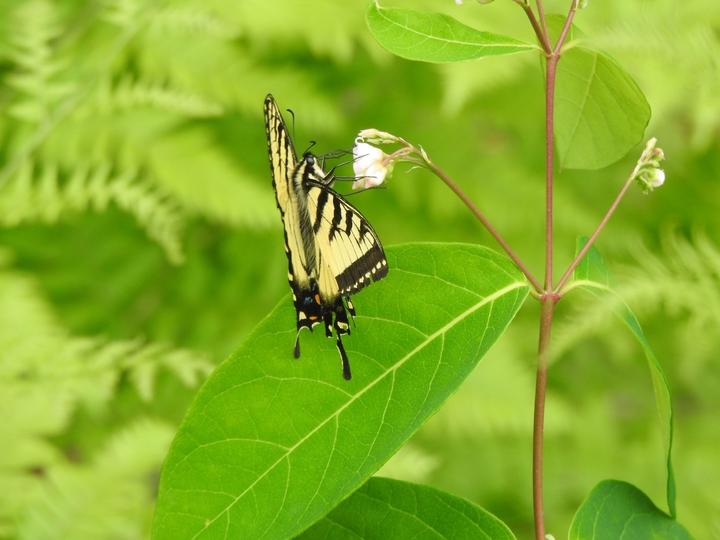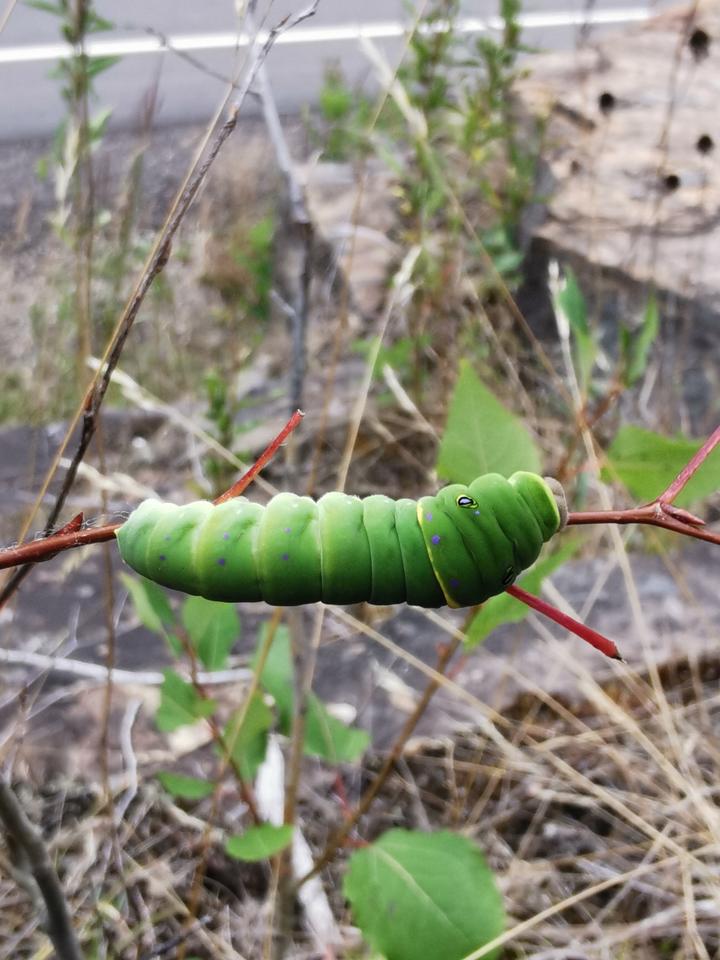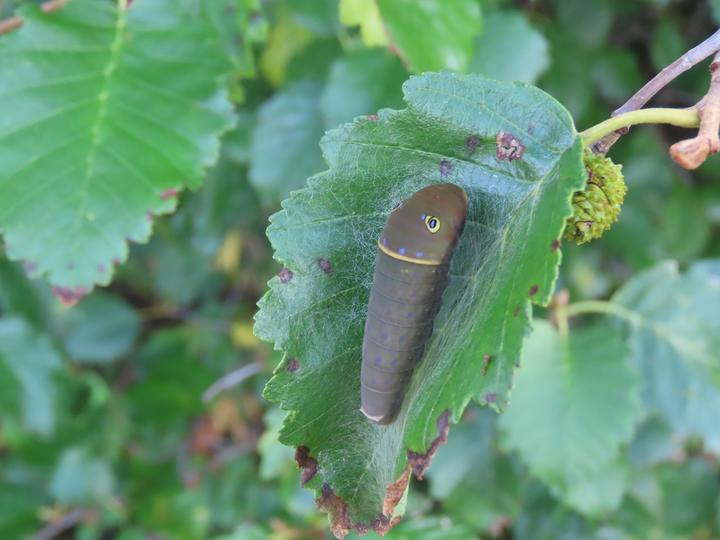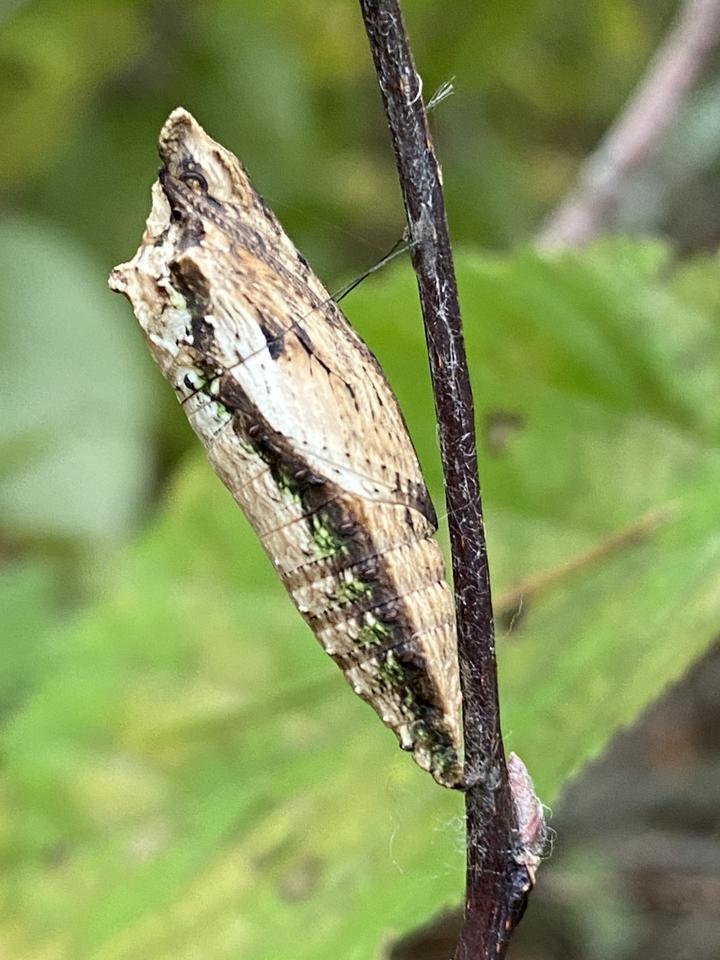More names for this insect
Anishinaabemowin: Memengwaa (butterfly)
Dakota: Kimamana (butterfly)
The Dakota and Anishinaabe were among the earliest people to name Minnesota’s plants and animals, as well as to understand them in relation to Minnesota’s climate and seasons. Those original names are still in use, and several are included on the Season Watch website.
Latin (or scientific name): Papilio canadensis
The scientific community has a convention of assigning agreed-upon Latin names to every kind of organism. Using scientific names helps people communicate confidently about the same organism and organize lifeforms based on how closely related they are.
Page contents
About the Canadian tiger swallowtail
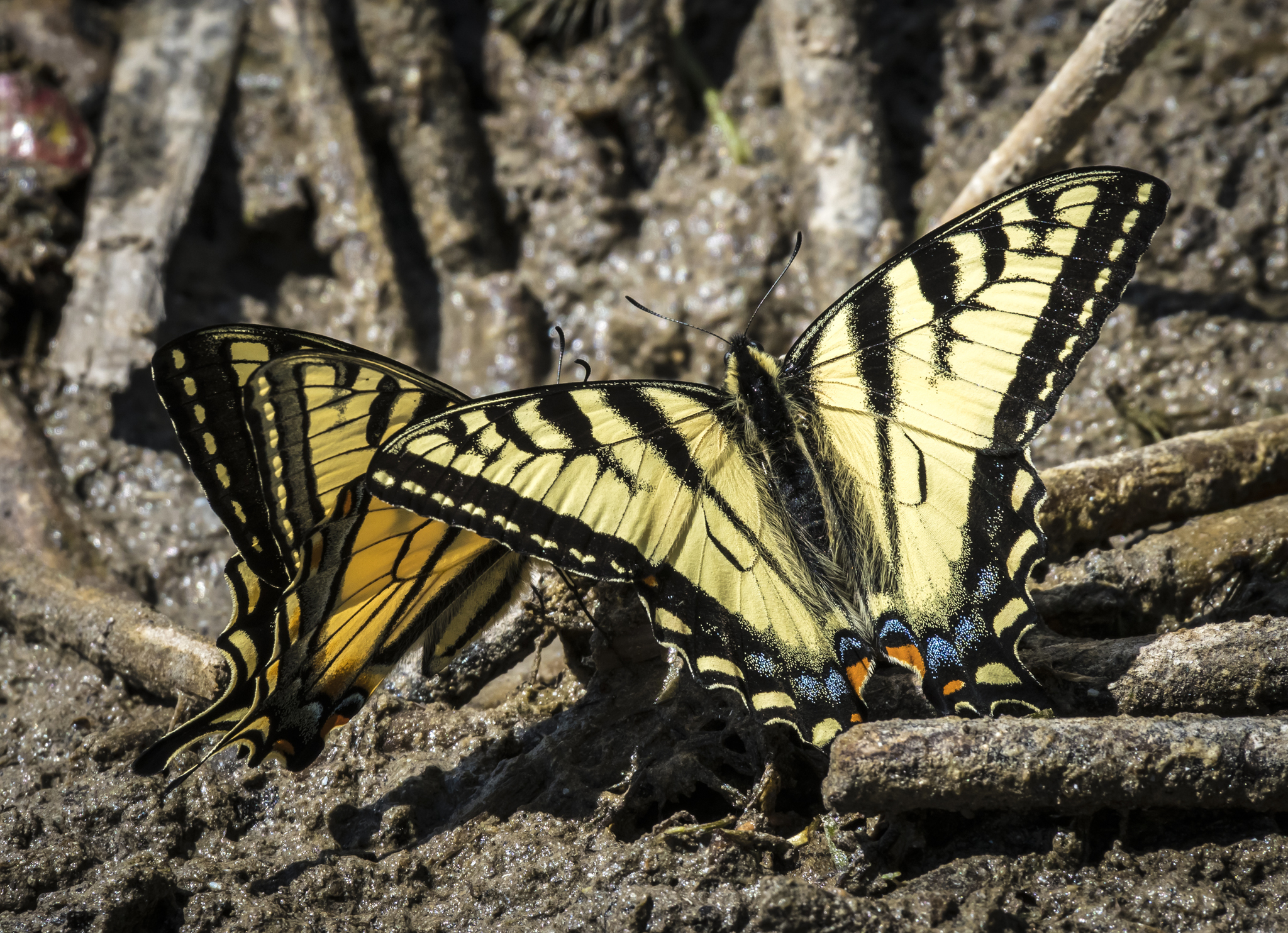
May 31, 2021, Beltrami County, Minnesota
Photo © Janet Nelson, some rights reserved (CC-BY-NC-ND)
iNaturalist observation
About the Canadian tiger swallowtail
- This bright yellow butterfly has black, tiger-like stripes on its wings. The hindwings have a row of vibrant blue and orange scales along the edge.
- Canadian tiger swallowtails have four life stages. They start as eggs that hatch into caterpillars. The caterpillar then enters the pupa life stage. The pupa overwinters in a cocoon. In the spring, the adult butterfly emerges from the cocoon.
- Young caterpillars are brown and white. Mature caterpillars are green and have two false eye spots, giving the impression of a large head with watchful eyes.
- Fun Fact: Male Canadian tiger swallowtails engage in a feeding activity called puddling. Groups of male butterflies congregate at a mud puddle to drink minerals dissolved in the water.
Visual guide to phenology
Watch for swallowtails' presence (or absence) and abundance at different times of year. Also, pay attention to when larvae (caterpillars) appear, develop into pupae and form cocoons.
Note to observers
This page explains general clues to watch and listen for when observing Canadian tiger swallowtail phenology. However, this page does not explain how to identify this butterfly or collect data in a standardized way.
- Consult a field guide for help with identification.
- For guidance on collecting data, see Nature’s Notebook.
Graphs and historical data
Note: The Orientation Center provides a map, as well as information on reading graphs; interpreting summary statistics, who collected the data and how; and how to download datasets for independent exploration.
First seen
- Earliest: May 10 (occurred in 2012)
- Average: May 25
- Latest: June 8 (occurred in 2013)

Last seen:
- Earliest: June 29 (occurred in 2007)
- Average: July 10
- Latest: July 18 (occurred in 2004)

Keep exploring Season Watch
Keep exploring Season Watch
Co-author: Audrey Negro, Minnesota Master Naturalist
